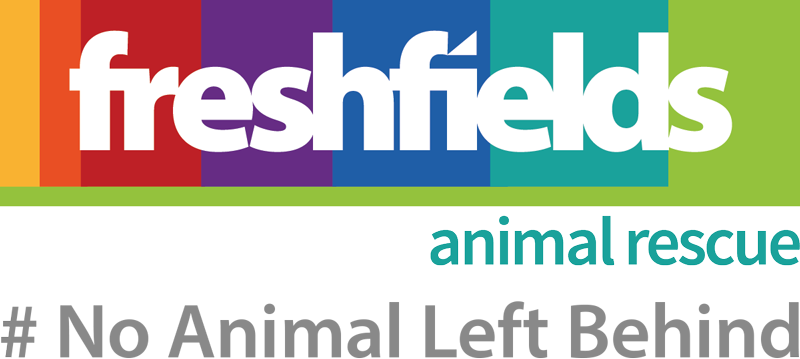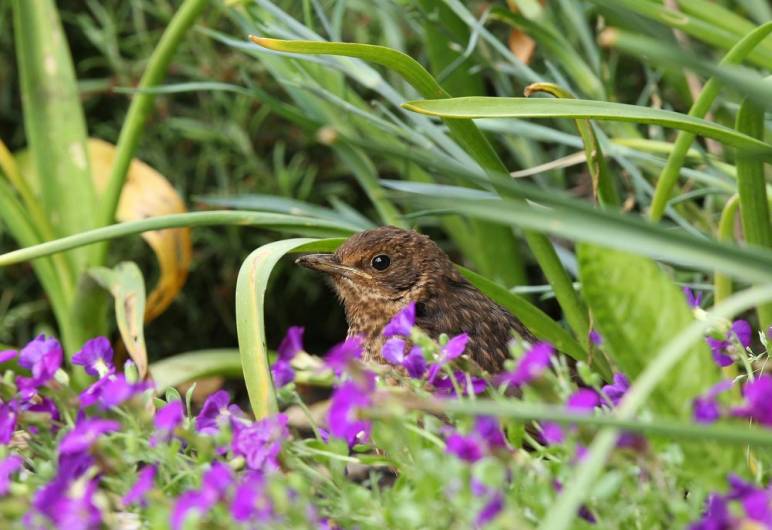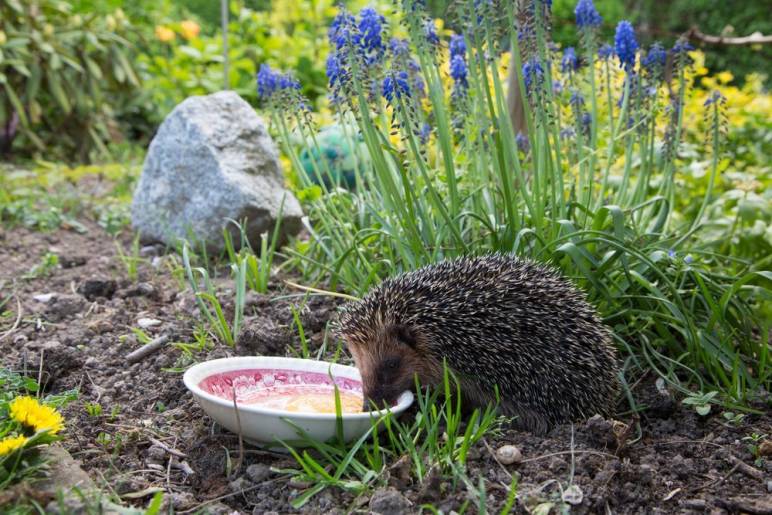Native Wildlife
All living creatures require a set of environmental conditions that enable them to move, feed and reproduce. When habitats are threatened, so are the animals that depend on them. By improving or creating new habitats, we are protecting resident wildlife and encouraging new wildlife to move in.
The UK faces the same serious problems that threaten biodiversity across the world. Green spaces are shrinking daily and instead of flowing, are becoming isolated pockets that can no longer sustain wildlife.
Almost daily, new species are added to the ever growing, endangered and threatened animal and plant lists in the UK. No group remains unscathed. Mammals, birds, reptiles, amphibians, fish, bees, beetles, butterflies, moths, crickets, damselflies, flies, spiders, grasshoppers, crustaceans, molluscs, plants, fungi, lichen and mosses are all affected by mankind. Our individual daily lives impact upon all creatures on earth.
Nature is diverse and all living things are interconnected, with each species relying upon the health of others for its very survival. When one link in the chain is damaged, the effects are wide-reaching, and many species are impacted.
PLANTS
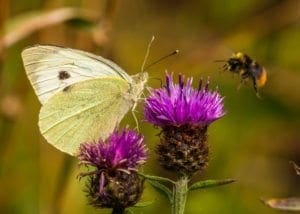 Bees are in decline worldwide and if this decline continues, mankind, along with a host of other creatures will suffer. Our pollinators need urgent help and we can all assist by growing pollinator friendly plants.
Bees are in decline worldwide and if this decline continues, mankind, along with a host of other creatures will suffer. Our pollinators need urgent help and we can all assist by growing pollinator friendly plants.
Nature is intricately connected. Plants do not reproduce in isolation. Flowers depend on bees and other insects for pollination, on
the birds that eat ripe berries and fruit, and on animals that carry seed in their fur.
Bees and butterflies hibernate over winter and don’t forage when it’s very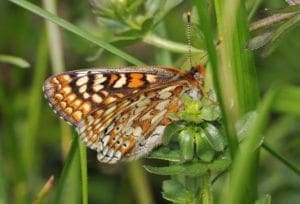 cold. Now, due to our milder winters, many bumblebee species are starting nests in winter rather than spring, so they need to be able to feed.
cold. Now, due to our milder winters, many bumblebee species are starting nests in winter rather than spring, so they need to be able to feed.
Food is required by bees/pollinators throughout the seasons so a succession of nectar rich plants is needed. A bumblebee can only fly for forty minutes while searching for food, so the more plants there are, the easier it is for our bees.
PLANTS IDEAL FOR POLLINATORS
Common, well loved, easily purchased plants.
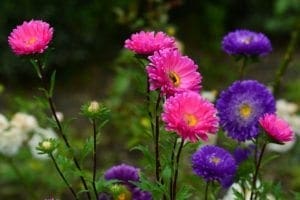 November-February
November-February
Winter aconites
Winter flowering Mahonia
Lonicera
Viburnum
March
Crocus
Primrose
Polyanthus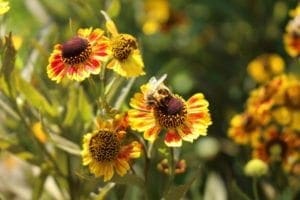
Single snowdrops
Violets
Fruit blossom, pear, plum, cherryApri
CowslipsLupins
May
Aquilegia Grape hyacint
Borage
Hardy Geraniums
June/July
Angelica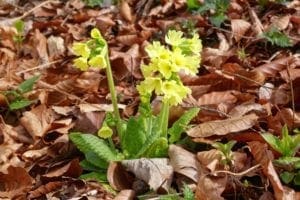
Catmint
Honeysuckle
Thyme
Sages/Salvias
August
Buddleia
Dahlias
Helenium
Lavender
Seedum
Sunflowers
September/October
Aster
Colchicum
Echinacea
Rudbeckia
Always do a little research when choosing plants, as some non-native plants can overpower native species, resulting in their decline. Some non-native species however, such as Cotoneaster and Pyracantha are extremely beneficial to birds. British wildflowers, meadows or strips of meadow are always a bonus and it’s always worthwhile to leave a nettle patch for butterflies.
Many plants, especially summer bedding are utterly sterile and are of no benefit to pollinators. You will always know which plants are providing a food source as they will be teeming with pollinarors.
Harsh chemicals and pesticides are lethal to wildlife so it’s better to avoid them. Companion planting and natural sprays are suitable alternatives.
PLANTING FOR WILDLIFE
Shrubs and hedging provide the perfect habitat for hedgehogs, especially during hibernation. Leaf mounds under hedges and bushes are also helpful, as they provide extra warmth and protection.
Ivy and climbing vines are ideal nesting sites for small garden birds.
Over-tidy gardens that are mainly flagged or decked provide little for wildlife. Birds need access to worms and other creatures that can be found in/under lawns. Grassy areas also help to prevent flooding.
Add turf, especially wildflower seeded turf to the tops of sheds and other small structures.
Leave seed heads on plants for birds during autumn and winter, along with fallen fruit, berries and nuts.
TIPS FOR A WILDLIFE FRIENDLY GARDEN
• Install a bird bath; this will help birds keep their feathers in pristine condition.
• Always ensure fresh water is available for small mammals, especially during dry spells.
• A pond will attract a huge variety of wildlife; always ensure that small mammals can climb out by adding a plank or branch. Many ponds can now be bought with an inbuilt amphibian ledge.
• Never allow a pond to freeze, place a football in the water during cold spells. Remove during the day and return at night.
• No pond is ever too small, even a sunken bin lid attracts wildlife and can mean the difference between life and death for many creatures.
• Water plants will aerate a pond and provide cover for frogs, toads, tadpoles and other water species.
• Cut a small hole in party fences to allow hedgehogs to move to other gardens and expand their territory. Alliances between multiple neighbours can create diverse hunting grounds for hedgehogs.
• Create a ladybird/solitary bee house from small canes. Insect houses can be made from all manner of natural objects including pine cones, straw and canes.
• A log pile or a few logs will attract a variety of insects and provide a haven for overwintering butterflies and moths to hibernate.
• Provide bird/owl boxes.
• Be extra vigilant when fledglings are on the ground. Keep pets indoors during these periods.
•Compost heaps, log piles, leaf litter and bark mulches that are allowed to rot and decay provide food and homes to a host of creatures. Always check compost heaps for hedgehogs, bees nests, and other creatures before disrupting.
• Keep gardens and green areas free from litter, cans, plastic cups, broken glass, plastics and torn netting.
And finally….
It’s not always possible to do all of these things, but by doing one or some of them, you will be helping our native wildlife and they certainly need all the help they can get.
The better the environment, the more wildlife you will attract.
Donate Here
Lost & Found Pets
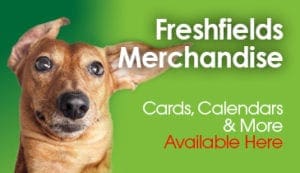
Merchandise
Exclusive merchandise available direct from the rescue. Don't miss out, follow the link to make your purchase today.

